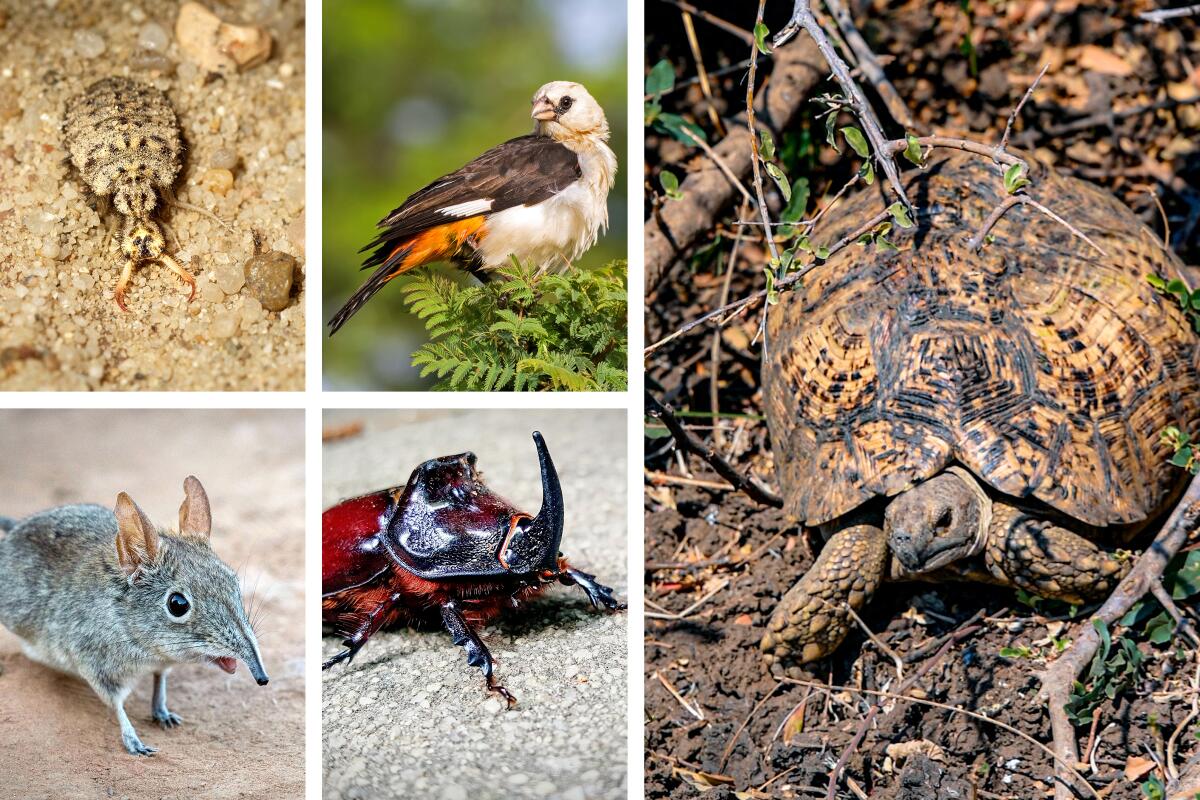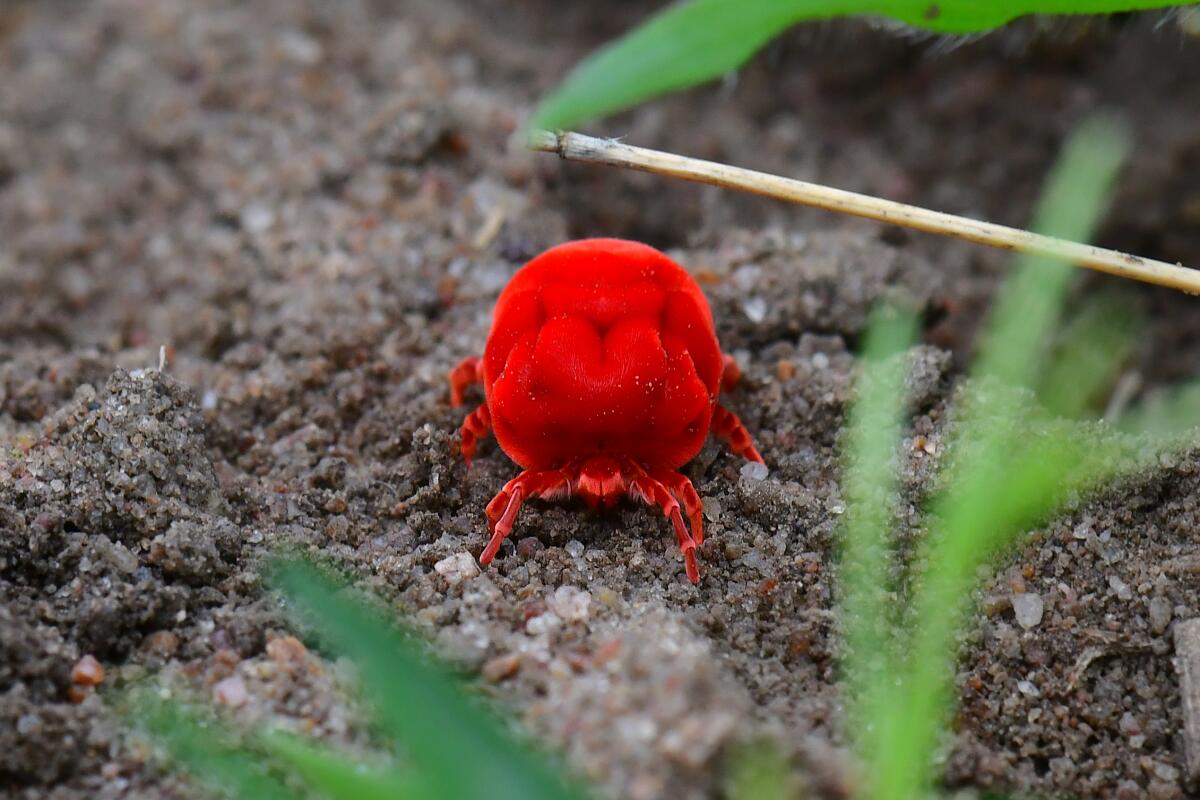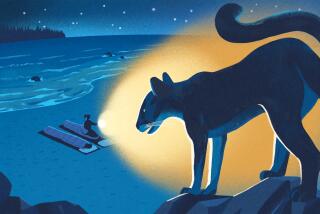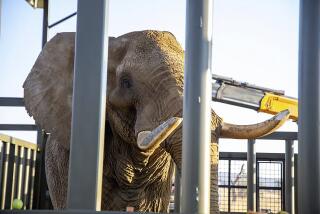You’ve seen the Big 5 on safari? In Zambia, you see them and the amazing Little 5

LOWER ZAMBEZI NATIONAL PARK, Zambia — My husband and I were hours into a morning trek in one of Zambia’s wildlife-rich national parks, and we had already seen some marquee safari sights — elephants, baboons, impalas. Then one of our guides stopped short. He pointed ahead to a thrilling discovery.
It was an animal that I’d been told would be hard to spot because it was the dry season. But there it was, peering from beneath a bush: a leopard tortoise, a beautiful reptile with a spotted shell.
OK, so it wasn’t one of the Big Five animals safari-goers get excited about as they whiz through the African bush by Land Rover. It was instead some of the smaller things — the “Little Five” birds, bugs and reptiles — that we wanted to see by going on foot. They all have names that echo their big-time counterparts: ant lion, rhinoceros beetle, buffalo weaver and elephant shrew, as well as the leopard tortoise.
We decided to come to Zambia, one of the less-traveled destinations in Africa, because it is the home of the walking safari. The landlocked former British colony in southern Africa specializes in this way of wandering through wildlife habitat.
We saw all kinds of things we would have missed from a vehicle: Fluorescent red insects. Extravagantly crested birds. A zebra leg, a remnant of a run-in with a lion. A hippo skull, allowing a look at the lethal jaw within that ugly-cute animal. Paw prints that told stories about the size and habits of animals.
A walking safari appealed to me because I am so restless; I could not imagine spending 10 days in a Land Rover. A traditional driving safari seemed more like wildlife voyeurism than immersion in nature. With the slower pace and detail-oriented focus of a walking safari, I hoped to understand animals, not just see them.
We traveled in early November at the end of the dry season, a great wildlife-viewing time because animals flock to rivers when water is sparse. We benefited from lower prices, which drop about Nov. 1 in most places. That’s considered the beginning of the rainy season, but it rained only twice, toward the end of our two weeks.
To see a range of environments, we visited three national parks — South Luangwa, Lower Zambezi and Kafue — and stayed in bush camps from rustic to deluxe. One place, Musekese Camp in Kafue, had bucket showers; another, Sausage Tree Camp in Lower Zambezi, had a masseuse. All provided all-inclusive services in spectacular settings.
The outsiders
We came to see that we were encroaching on the animals’ turf. A warthog grazed near our cabin in one place. We would have to detour for meals if elephants were wandering around. Once, upon returning from a morning walk, we couldn’t reach our cabin because a male lion had settled nearby for his afternoon siesta.
On a typical day, we rose at 5 a.m. to start walking while it was not too hot. We would return to camp for lunch and rest in the midday heat, then head out again in late afternoon for a drive. I much preferred the walks, but the different modes of travel were complementary: You can’t see the big animals up close unless you are in a vehicle, and you can’t fully appreciate them until you get close to their habitat.
It was easy to spot the Big Five (except for the endangered rhinoceros) while driving because they are unafraid of people in vehicles. Within our first hours on the ground, while being driven to our first camp in South Luangwa, we spotted hippos, baboons, zebras, elephants, buffaloes, giraffes and all manner of antelopes. It was almost too easy, like taking a zoo tour.
It was a different story the next day on a four-hour walk that began at 6 a.m. We spotted elephants, warthogs and hippos, but they kept their distance: Animals are more fearful of people approaching on foot than in cars. That helped allay my initial fears that going on foot was recklessly risky. (This was the first time I’d bought additional health insurance for an international trip.)
Another security blanket: We always hiked with a rifle-toting scout. He walked out front, scanning the horizon, going up hills before us to be sure we didn’t surprise a herd of elephants or buffalo. But the risk was low: One Zambian told us he had been scouting for 16 years and never had to use his gun.
It wasn’t long before we began spotting the “Little Five.” An elephant shrew — a tiny mammal with a trunk-shaped nose — dashed across the path and into the brush. The lairs of the ant lion — an insect that builds a tiny, conical sand pit, lurks at the bottom and waits for an ant to tumble down and into its clutches — were everywhere.
Termites as helpers?
Our well-trained Zambian guides unlocked mysteries of the landscape.
What are those towering earthen mounds we see all over the place? They were built by termites, which have a bad rep in civilized society as a foundation-eating pest. But in nature, they play an invaluable role decomposing dung and wood, and the result is mounds that serve as rich planting soil. We saw one mound with 15 species of trees growing.
Who knew what hippos did at night? We saw them wallowing in the river during the day, but they graze on land at night. We learned that as we walked along their well-trod paths — hippo highways.
How do hippos mark territory? Our guide showed us hippo dung hanging on a bush. They leave their mark by flicking their tails to spread their dung. Suddenly it made sense when we saw that odd behavior when males faced off in the river.
We also saw the spectacular changes that occur when the dry season gives way to the rainy one. The first rain in Kafue National Park came near the end of our visit. Torrential rain and wind battered the canvas walls of the camp, sending the staff scampering to batten things down.
We found the landscape was transformed when we walked the next morning. New waterways flowed. Bright red bugs — velvet mites — came out and speckled the ground as they do only after it rains. Termites flew out of their mounds, crawled on the ground and were gobbled up by hungry animals. Ants scrambled all over the place, including up my leg when I made the mistake of crossing their paths.

That was an uncomfortable reminder that small things in the bush are not only beautiful but also potentially risky. On our last night, we dined at Musekese Camp with co-owner Tyrone McKeith; he abruptly rose from the table and told me not to move. He reached over and swatted something from my stomach. Only then did he tell me it was a scorpion.
This journey took us to some of the most remote places I’d ever visited, so sometimes it felt as if we were in a Joseph Conrad novel. To get to Musekese Camp, we flew in a four-seat prop plane to a dusty airstrip (the pilot had to fly once over the strip to be sure no animals were in the way). We were picked up in a Land Rover, then transferred for a boat ride, then onto another Land Rover for a final stretch. At the end was a surprise, but it was hardly a “Heart of Darkness” experience. There were only two other guests at the camp when we arrived. One of them was a subscriber to the Los Angeles Times.
If you go
THE BEST WAY TO ZAMBIA
From LAX, Turkish Air, KLM, Emirates and Delta offer connecting service (change of planes) to Zambia’s capital, Lusaka. Restricted round-trip fares from $1,990, including taxes and fees.
Flights from Lusaka to small airports near Zambia’s national parks are available from Proflight Airlines (proflight-zambia.com). Charter flights are available from Sky Trails (skytrailszambia.com). Some camps offer ground transportation from Lusaka or nearby airports.
TELEPHONES
From the U.S., dial 011 (the international dialing code) and 260 (the country code for Zambia). Some camps below are managed from South Africa, where 27 is the country code.
WHERE TO STAY
Time + Tide Kakuli, South Luangwa National Park; 27-60-642-4004, bit.ly/kakulicamp. One of 10 camps operated in Zambia by Time + Tide. All-inclusive fee (lodging, all meals and drinks, laundry, activities) from $730 per person per night.
Sausage Tree Camp andPotato Bush Camp, Lower Zambezi National Park; 27-76-586-1927, sausagetreecamp.com, potatobushcamp.com. Sausage Tree offers luxury accommodations in a spectacular setting; Potato Bush, a sister camp, accommodates families. All-inclusive fee (lodging, all meals and drinks, private guide, laundry, activities) from $990 per person per night (Sausage) and $650 per person per night (Potato).
Musekese Camp, Kafue National Park; 26-09-741-73403 or 26-09-7621-5426, jefferymckeith.com/musekese. One of the last owner-run safari camps in Zambia. All-inclusive fee (lodging, all meals and drinks, laundry, activities) from $560 per person per night, low season.
TO LEARN MORE
Zambia Tourism, bit.ly/zambiaparks
Group trips and tailor-made excursions to Zambia are offered by:
Audley Travel, 77 N. Washington St., Boston; (855) 838-8300, audleytravel.com/us/zambia
Natural World Safaris, 130A Western Road, 2nd Floor, Brighton, England; (866)357-6569, bit.ly/zambiaholidays
More to Read
Sign up for The Wild
We’ll help you find the best places to hike, bike and run, as well as the perfect silent spots for meditation and yoga.
You may occasionally receive promotional content from the Los Angeles Times.







